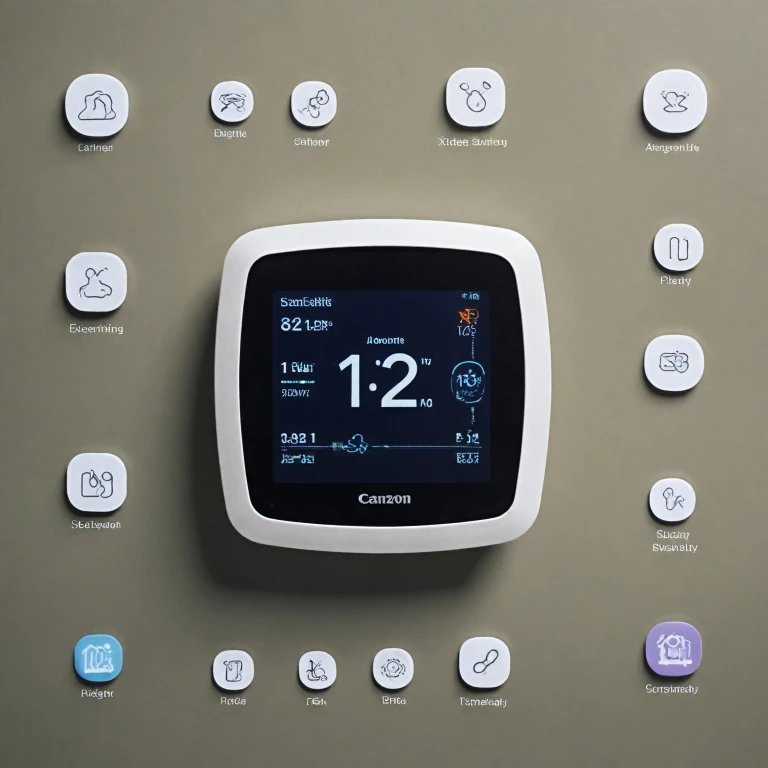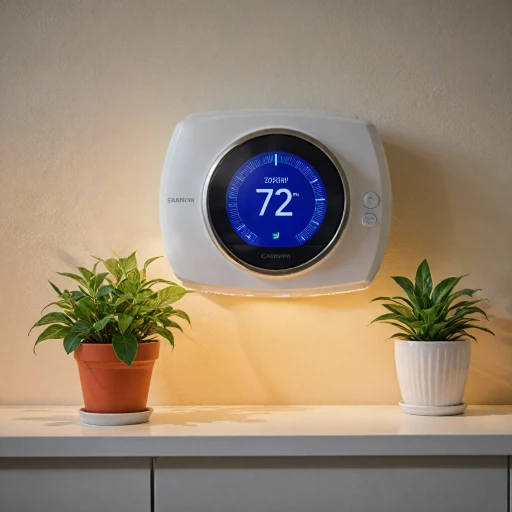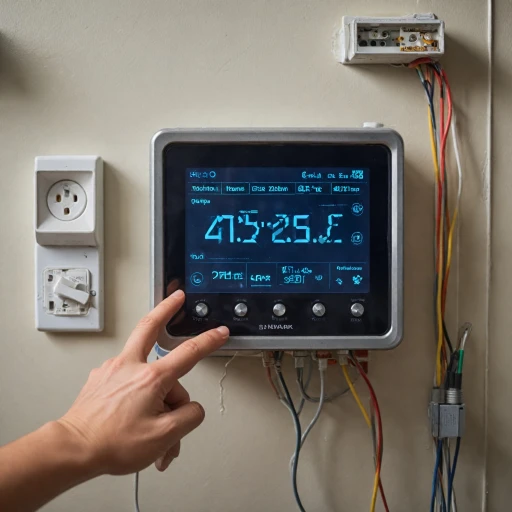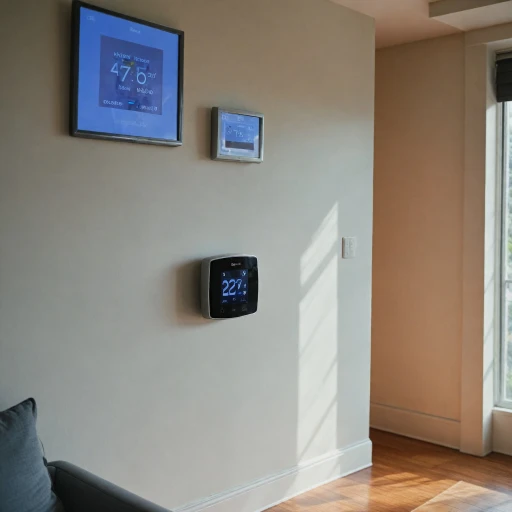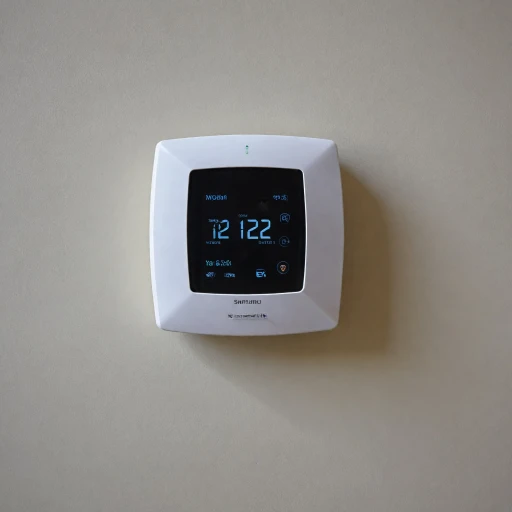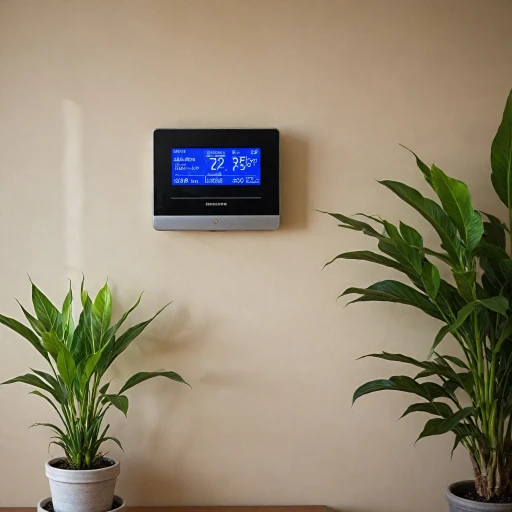
Factors Influencing Smart Thermostat Longevity
Key Elements Determining the Durability of Your Smart Thermostat
When it comes to the longevity of smart thermostats, several factors can affect their performance and durability. Understanding these elements can help you make the most out of your hvac system, optimizing both energy efficiency and air quality.- Device Quality: The quality of the thermostat itself plays a crucial role in its lifespan. High-end smart thermostats often employ more robust hardware and advanced technology, allowing them to withstand wear and tear better than lower-end models.
- Installation and Setup: A properly installed thermostat is less prone to issues and may enjoy a longer runtime. Incorrect setup can lead to frequent thermostat replacement or repair needs. For guidance, explore solutions to common power issues.
- Regular Maintenance: Routine maintenance, such as checking for updates or ensuring the compatibility of the car thermostat within a smart home ecosystem, can help to sustain its lifespan and enhance its functionality. This upkeep plays a significant role in maintaining energy bills at a manageable level.
- Usage Patterns: The frequency of use and how the thermostat is utilized (e.g., keeping it on an energy-saving mode or adjusting the temperature frequently) can impact its longevity. Programmable thermostats, user-friendly for managing heating and cooling, can help in extending the lifespan by optimizing energy usage.
- Environmental Conditions: Humidity and extreme temperature variations can affect the performance of smart thermostats. It’s essential that the heating cooling system is capable of managing these conditions effectively to prevent excessive strain on the device.
Typical Lifespan of Smart Thermostats
Understanding the Durability of Smart Thermostats
When considering an investment in a smart thermostat, it's important to acknowledge several factors that can influence how long these devices typically last. Upon closer inspection, the typical lifespan of smart thermostats is quite robust but varies depending on various conditions.- Average Lifespan: Smart thermostats are generally designed to last between 10 to 15 years. However, this doesn't mean they'll function trouble-free for that entire duration. Components within the device may wear out over time, potentially requiring repairs or even replacement.
- Technological Obsolescence: As technology advances, older models may lose support or compatibility with new HVAC systems or control applications. New features might also render older, less energy-efficient models outdated.
- Environmental Factors: The physical environment where the thermostat is installed can also play a significant role in its longevity. Excessive exposure to dust, moisture, or extreme temperatures could reduce operational life.
- Usage Patterns: The frequency of use and the demands placed on the smart thermostat can impact its durability. Systems that frequently manage complex heating and cooling schedules or adjustments may experience more wear.
Signs Your Smart Thermostat Needs Replacement
Indicators That It's Time to Consider a Thermostat Substitute
Smart thermostats, while known for their innovative features and convenience, are not immune to the signs of wear and tear. Understanding when it might be time for a thermostat replacement can help ensure your heating and cooling system remains efficient and effective. Here are several signs that your thermostat might be nearing the end of its lifecycle:
- Inconsistent Temperature Readings: If your home feels colder or warmer than your thermostat's settings, it may not be regulating the air temperature accurately. This could lead to higher energy bills as your HVAC system works harder to compensate for incorrect readings.
- Frequent On/Off Cycling: A thermostat that causes your HVAC system to frequently turn on and off might be malfunctioning. This can strain your system, leading to a need for repair or replacement of components beyond just the thermostat.
- Lack of Response: If the screen is blank, the thermostat doesn't respond to input, or the system fails to turn on with manual or programmed settings, it could indicate a need for service or replacement.
- Age of the Thermostat: While well-maintained smart thermostats can last for many years, if they are significantly old, consider the longevity of the technology and the updates and advancements available today.
- Limited Functionality: Newer smart thermostats offer enhanced air quality monitoring, energy efficiency features, and improved programmable options. If yours lacks these, it might be time to upgrade to harness these benefits.
To preserve the functionality of your HVAC system, regularly assess the state of your thermostat. Timely replacement can lead to better system efficiency and improved comfort. Moreover, keeping up with advancements ensures you enjoy the latest in smart technology for optimal home comfort. Keeping an eye on these signs will help in timely maintenance and prevent extended downtimes due to system failures.
Maintenance Tips to Extend Thermostat Life
Keep Your Thermostat in Prime Condition
To ensure that your smart thermostat and the broader HVAC system function efficiently, regular maintenance is key. By taking the time to service your thermostat, you not only enhance its performance but also extend its longevity, impacting your energy bills positively. Here are some practical maintenance tips:
- Check for Dust and Debris: Periodically inspect your thermostat for any dust accumulation which can impact temperature readings and system responsiveness. Gently clean it using a soft brush or cloth.
- Update Software: Manufacturers often release software updates that optimize energy efficiency and integrate new features. Ensure your smart thermostat's firmware is up-to-date to benefit from the latest advancements.
- Examine Wired Connections: Ensure all electrical connections within your thermostat are secure, especially if your system experiences frequent disruptions. Loose connections could lead to inaccurate temperature settings or signal failures.
- Calibrate Regularly: Regular calibration ensures that your smart thermostat accurately measures and adjusts the temperature, optimizing your heating and cooling systems. Follow manufacturer guidelines to calibrate effectively.
- Monitor Air Quality: A clogged air filter in your HVAC can affect your thermostat's performance, leading to inefficient heating and cooling. Regularly replacing air filters keeps your system and thermostat functioning smoothly.
Understanding these maintenance measures can greatly enhance the lifespan of your smart thermostat, alongside ensuring it's always operating at peak efficiency. While some of these tasks can be done independently, consider professional service if you encounter persistent issues. Over time, keeping up with these practices will help you avoid premature thermostat replacement, maximizing your investment in this crucial home technology.
Technological Advancements and Their Impact on Lifespan
Impact of Technology on Thermostat Longevity
The rapid pace of technological advancements is continually reshaping the smart thermostat landscape, and these changes have a direct impact on their lifespan. With each new release, manufacturers introduce features designed to optimize energy efficiency and enhance user experience. While these innovations bring numerous benefits, it's vital to understand how they can affect the longevity of your smart thermostat.
Continuous software updates, a hallmark of most modern thermostats, help maintain optimal performance levels and rectify any potential security vulnerabilities. However, as new technologies emerge, older models might struggle to support these updates effectively, which can lead to a decline in performance over time. This is a common scenario across many devices, not just HVAC systems.
In the realm of smart thermostats, the integration of advanced sensors and machine learning capabilities has become increasingly common. These features contribute to better data collection and energy management, but they also increase the complexity of the internal system. For instance, programmable thermostats may now adjust heating and cooling patterns based on past usage data, improving comfort and lowering energy bills. Yet, such sophisticated systems might require more frequent service and careful maintenance to maximize their lifespan.
Technological upgrades also play a role in determining when you might want to consider a thermostat replacement. As new standards for energy efficiency and air quality emerge, some homeowners may opt to upgrade their systems before the signs of aging become prominent. This proactive approach ensures that their heating and cooling systems remain at the forefront of technology and efficiency.
Ultimately, keeping an eye on technological trends within the HVAC sector not only ensures you have the latest features available but also helps you recognize the right time to replace thermostat components or the entire system to maintain optimal comfort and energy savings.
